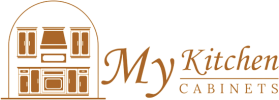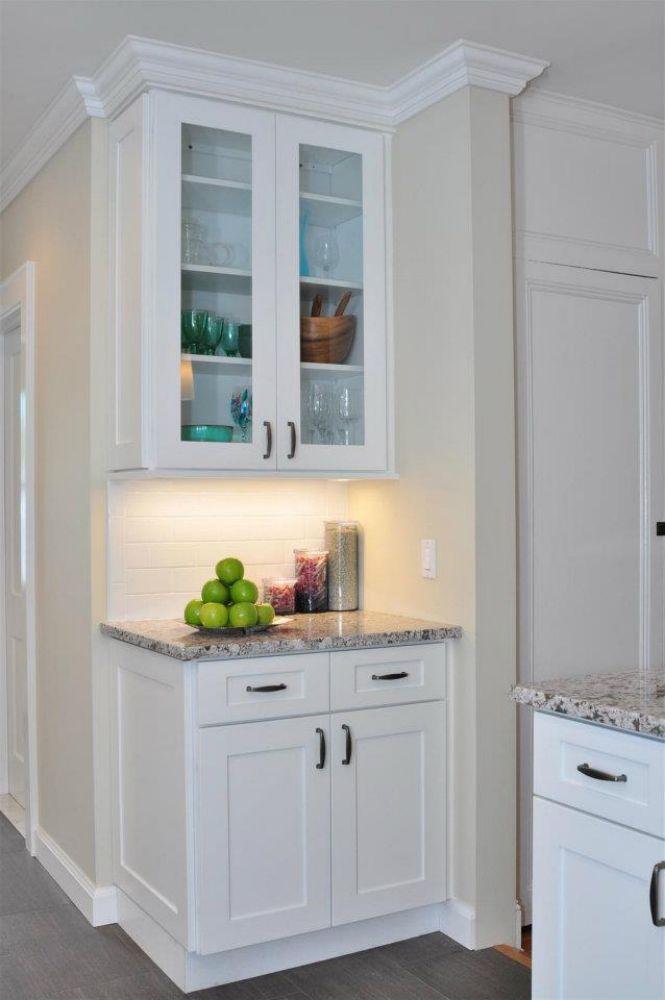Understanding the Difference Between Inset and Overlay Kitchen Cabinets
When designing or remodeling your kitchen, one of the most important decisions you’ll make involves the style of your cabinetry. Among the most debated choices are inset vs. overlay kitchen cabinets, each offering unique visual and functional characteristics. While inset cabinets often come with a higher price tag, they’re also renowned for their craftsmanship, precision, and timeless elegance.
At My Kitchen Cabinets, we help homeowners make informed choices about their kitchen cabinets, ensuring a perfect balance between beauty, durability, and budget. In this comprehensive guide, we’ll break down the differences between inset and overlay cabinet styles, analyze their pros and cons, and help you decide whether the added cost of inset cabinetry is truly worth the investment for your kitchen.
What Are Inset Kitchen Cabinets?
Defining the Inset Cabinet Style
Inset kitchen cabinets are characterized by doors and drawer fronts that are perfectly fitted inside the cabinet frame, creating a smooth, flush surface. This style dates back to early 19th-century craftsmanship, where precision woodworking was a hallmark of luxury cabinetry.
Because the doors sit within the frame rather than on top of it, the gaps between components are minimal—showcasing fine craftsmanship and clean, tailored lines. The hinges are often visible on traditional models, adding a touch of old-world charm, though modern inset cabinets may use concealed hinges for a sleeker appearance.
Precision Engineering and Craftsmanship
Inset cabinets demand high accuracy. Each door and drawer must be cut and installed to exact measurements to fit seamlessly within the cabinet frame. Seasonal changes in humidity can affect wood expansion, which means quality materials and proper construction are crucial to prevent binding or misalignment over time.
What Are Overlay Kitchen Cabinets?
Overlay Cabinet Design Explained
Unlike inset styles, overlay cabinets have doors and drawers that rest on top of the cabinet frame. Depending on the type, overlays can either cover most of the frame (full overlay) or leave portions visible (partial overlay).
-
Full Overlay: Offers a modern, seamless look with minimal gaps between doors and drawers.
-
Partial Overlay: Leaves more of the cabinet frame exposed, giving a more traditional aesthetic and reducing manufacturing costs.
Simplicity in Construction
Overlay cabinets are easier and faster to manufacture since they don’t require the same precision fitting as inset styles. This makes them more budget-friendly while still offering durability and style versatility.
The Key Differences Between Inset and Overlay Cabinets
| Feature | Inset Cabinets | Overlay Cabinets |
|---|---|---|
| Design | Doors sit inside the frame | Doors overlap the frame |
| Appearance | Clean, flush, and sophisticated | Can be modern or traditional |
| Craftsmanship | High precision and detailed joinery | Easier and quicker to construct |
| Cost | Higher due to precision labor | More affordable |
| Maintenance | Requires more care and adjustment | Easier to maintain |
| Storage Space | Slightly less interior space | More usable space inside drawers and shelves |
Why Inset Kitchen Cabinets Cost More
1. Skilled Craftsmanship
Inset cabinetry demands exact measurements—typically within 1/16 of an inch. Every door must fit perfectly within the frame, requiring more time, skill, and high-quality materials. The craftsmanship involved justifies the higher cost.
2. Material Quality
Since inset cabinets rely on tight tolerances, they are often built using premium hardwoods or plywood to ensure stability. This not only enhances appearance but also prevents warping and misalignment over time.
3. Time-Intensive Manufacturing
Producing inset cabinets takes longer than overlay models because every component must be precisely aligned. The attention to detail extends from cutting and sanding to finishing and installation.
4. Customization Options
Inset cabinetry is usually part of semi-custom or custom lines, offering homeowners greater control over finishes, moldings, and hardware. The added personalization contributes to the higher price point.
5. Durability and Longevity
While upfront costs are higher, inset cabinets are built to last. Their sturdy construction and precise fit reduce wear and tear, making them a smart long-term investment.
The Benefits of Inset Kitchen Cabinets
1. Timeless Elegance
Inset cabinets evoke a sense of traditional craftsmanship that never goes out of style. Whether your kitchen is classic or modern, their seamless lines and inset doors create a look of refined simplicity.
2. Precision and Quality Feel
The perfectly flush alignment of inset cabinetry exudes quality. The tight fit and solid construction convey a level of detail often associated with high-end furniture.
3. Design Versatility
Inset cabinets can adapt to many kitchen aesthetics—from farmhouse and transitional to modern minimalist designs. You can choose visible or hidden hinges, custom colors, and intricate moldings.
4. Durability
Thanks to their solid frame construction and meticulous engineering, inset cabinets are built to last. They can withstand decades of use without sagging or misalignment.
5. High Resale Appeal
Buyers often associate inset cabinetry with premium craftsmanship, increasing your home’s perceived value. Investing in inset cabinets can enhance both visual appeal and resale potential.
The Drawbacks of Inset Kitchen Cabinets
1. Higher Cost
Inset cabinets can cost 15–30% more than overlay styles due to their intricate construction. This makes them a premium choice suited for homeowners who prioritize aesthetics and craftsmanship.
2. Slightly Reduced Storage Space
Since doors and drawers fit inside the frame, inset cabinets lose a small amount of interior space compared to overlay designs. While minimal, it’s something to consider for smaller kitchens.
3. Maintenance and Adjustments
Wood naturally expands and contracts with humidity. Because inset doors fit tightly, you may occasionally need adjustments to prevent rubbing or misalignment.
4. Longer Lead Times
The precision required for inset cabinetry means longer manufacturing and delivery times compared to overlay models.
Advantages of Overlay Kitchen Cabinets
1. Cost-Effective
Overlay cabinets are generally more affordable due to simpler construction. They offer excellent value for homeowners on a budget who still want attractive, durable cabinetry.
2. Easier Maintenance
Because there are no tight gaps between the doors and frame, overlay cabinets are less affected by humidity changes. They require fewer adjustments over time.
3. More Storage Capacity
Overlay cabinets utilize the full interior space of the frame, providing slightly more storage—an advantage for smaller kitchens.
4. Modern Design Options
Full-overlay styles create a clean, sleek appearance similar to European frameless designs, making them ideal for contemporary kitchens.
Design Considerations When Choosing Between Inset and Overlay
1. Kitchen Style and Architecture
-
Inset Cabinets: Perfect for traditional, farmhouse, or transitional kitchens where craftsmanship and detail are focal points.
-
Overlay Cabinets: Work best in modern or casual spaces where simplicity and efficiency matter.
2. Budget and Long-Term Goals
If you plan to stay in your home long-term, investing in inset cabinets may pay off through durability and resale value. For rental properties or temporary residences, overlay cabinets provide excellent style at a lower cost.
3. Kitchen Size
Inset cabinets are great for larger kitchens where slight storage loss isn’t an issue. In smaller spaces, overlay cabinets can maximize available room.
4. Aesthetic Preferences
If you appreciate traditional joinery, visible hinges, and furniture-like detail, inset is the way to go. For homeowners who prefer sleek lines and minimalist surfaces, full-overlay designs may be more appealing.
How to Evaluate Quality in Both Inset and Overlay Cabinets
1. Examine the Construction
Look for sturdy materials like ¾” plywood boxes and solid wood frames. Avoid thin particleboard or MDF in key structural areas.
2. Check Joinery Methods
Dovetail joints in drawers and mortise-and-tenon connections in doors indicate superior craftsmanship.
3. Test Hardware
Soft-close hinges, full-extension drawer slides, and adjustable shelving are signs of premium design.
4. Inspect Finishes
A smooth, even finish with no brush marks or bubbles reflects attention to detail. Quality finishes protect against moisture and everyday wear.
5. Consider the Manufacturer
Trusted suppliers like My Kitchen Cabinets ensure every component meets high standards of durability, function, and beauty.
Cost Comparison Between Inset and Overlay Cabinets
| Feature | Inset Cabinets | Overlay Cabinets |
|---|---|---|
| Average Cost per Linear Foot | $500–$1,200 | $300–$800 |
| Customization Options | Extensive | Moderate |
| Material Quality | Premium-grade hardwoods | Mid to high quality |
| Installation Complexity | High (requires precision) | Moderate |
| Maintenance | Periodic adjustments | Minimal maintenance |
While inset cabinets have a higher upfront cost, they offer exceptional longevity and craftsmanship that make them a worthwhile investment for homeowners seeking lasting beauty and performance.
Practical Tips Before Buying Inset Cabinets
-
Work with Experienced Installers: Proper installation is crucial for maintaining alignment and performance.
-
Request Samples: Evaluate finishes, colors, and hardware quality before purchase.
-
Ask About Warranty: Premium brands should offer long-term coverage on hardware and finish.
-
Consider Environmental Factors: If you live in humid or coastal regions, ensure the cabinets have humidity-resistant finishes.
-
Blend Function and Style: Balance the visual elegance of inset cabinetry with practical storage solutions, such as pull-out shelves and deep drawers.
When Overlay Cabinets Might Be the Smarter Choice
Overlay cabinets are ideal for:
-
Homeowners on a budget who still want style flexibility.
-
Busy families needing easy-to-clean, low-maintenance cabinetry.
-
Smaller kitchens where maximizing interior space is critical.
-
Modern homes where minimalist design fits the aesthetic.
When Inset Cabinets Are Worth the Investment
Choose inset cabinets if:
-
You value precision craftsmanship and a timeless look.
-
You plan to stay in your home long-term.
-
You prefer a furniture-like appearance with clean, custom detailing.
-
You’re upgrading a high-end or historic home and want architectural authenticity.
Inset cabinets are not just a purchase—they’re an investment in enduring quality and style.
Conclusion
So, are inset kitchen cabinets worth the higher cost compared to overlay? The answer depends on your priorities, budget, and design goals.
If you appreciate old-world craftsmanship, crave precise construction, and want cabinetry that looks as though it was custom-built for your space, inset cabinets deliver unparalleled elegance and long-term value. They embody meticulous artistry that transforms your kitchen into a statement of refinement.
On the other hand, overlay kitchen cabinets provide incredible versatility, affordability, and practicality—making them perfect for busy families and modern spaces where functionality is key.
At My Kitchen Cabinets, we offer both inset and overlay cabinet styles, crafted with premium materials and expert construction. Whether you choose the timeless charm of inset or the efficiency of overlay, our kitchen cabinets ensure durability, performance, and beauty that will stand the test of time.
FAQs
1. What is the main difference between inset and overlay kitchen cabinets?
Inset cabinets have doors that fit inside the cabinet frame, creating a flush look. Overlay cabinets have doors that sit on top of the frame, partially or fully covering it.
2. Why are inset cabinets more expensive?
Inset cabinets require precise craftsmanship, higher-quality materials, and more labor-intensive assembly. The tight tolerances and fine detailing increase production costs but also enhance quality and longevity.
3. Do inset cabinets require more maintenance?
Slightly. Because of their tight fit, they may need periodic hinge adjustments to account for wood expansion and contraction due to humidity.
4. Which cabinet style offers more storage space?
Overlay cabinets provide slightly more interior space since their doors and drawers sit outside the frame. This makes them ideal for smaller kitchens.
5. Are inset cabinets a good investment?
Yes. Inset cabinets add long-term value to your home due to their durability, precision, and classic design. They’re especially worthwhile for homeowners seeking a luxury aesthetic that stands the test of time.
Read: How do I compare warranties between different kitchen cabinets brands?
Read: How do I choose eco-friendly kitchen cabinets for a sustainable home?

